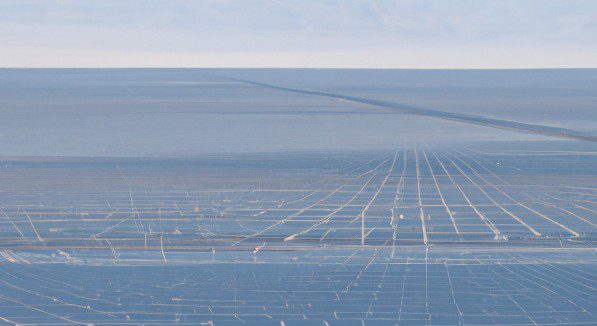On a whim, let’s see how we could determine the number of square miles of solar panels needed to replace Bonneville Dam in Oregon, we need to consider several factors, including the dam’s electricity generation capacity, the efficiency of solar panels, and the average solar insolation in the region.
Solar insolation a measurement of solar radiation received on a given surface during a given time period. In particular, daily insolation Q (MJ m− 2 day− 1) is the solar radiation incident on a horizontal surface per square meter integrated over a day. Insolation varies seasonally and with daily variation in cloud cover.
Bonneville Dam has a total generating capacity of approximately 1,287 megawatts.
Now, let’s make some assumptions for the calculation:
Solar Panel Efficiency: The efficiency of solar panels can vary, but let’s use an average efficiency of around 15%, which is a common value for commercial solar panels.
Solar Insolation: The amount of sunlight a location receives is measured in solar insolation. Oregon’s solar insolation can vary, but we can use an average value for estimation purposes. Let’s use 4.5 hours of peak sunlight per day, which is a reasonable approximation for some parts of Oregon.
The formula to calculate the required area of solar panels is:
Area (in square miles)=Electricity demand (in megawatt-hours) Solar panel efficiency×Solar insolation Area (in square miles)=Solar panel efficiency×Solar insolation Electricity demand (in megawatt-hours)
Given that 1 megawatt-hour is equal to 1,000 kilowatt-hours, we can calculate the area needed:
Area (in square miles)=1,287,000 MWh0.15×4.5 hours/dayArea (in square miles)=0.15×4.5hours/day1,287,000MWh
Area (in square miles)≈1,287,0000.675Area (in square miles)≈0.6751,287,000
Area (in square miles)≈1,906,666.67Area (in square miles)≈1,906,666.67
So, approximately 1,906,667 square miles of solar panels would be needed to replace the electricity generation capacity of Bonneville Dam in Oregon under the given assumptions. It’s important to note that this is a simplified calculation, and actual requirements may vary based on numerous factors such as local weather conditions, panel orientation, and other geographical considerations. Additionally, technological advancements and changes in solar panel efficiency may impact these estimates in the future.
The accuracy of this article should be questioned, as I learned algebra by accident.. Even I don’t believe this correct. But I was curious, so there it is… =]


